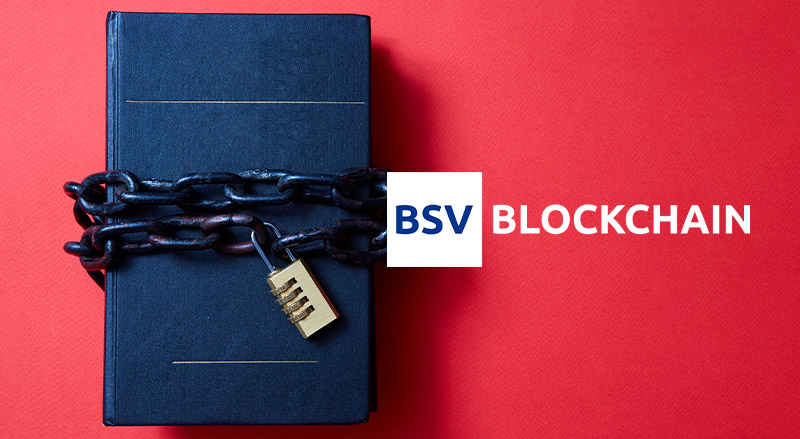In the peer-reviewed book ‘Intellectual Property – Global Perspectives, Advances and Challenges’ by Appavoo Umamaheswari and Sakthivel Lakshmana Prabu, Dr Eva Porras explores how blockchain can remedy several problem areas in IP law and IP management.
In Porras’ view, the technology is caught between potential economic growth and legal and regulatory conflict. She lists a range of benefits the blockchain has in the management and execution of IP rights. These benefit both the IP rights holders and their potential partners, licensees, as well as the regulating authorities.
Blockchain’s biggest benefits for IP and regulations
Some of the obvious benefits include:
Immutable and secure records
Blockchain technology creates a secure and immutable chain of information. It ensures that data stored in the blockchain cannot be altered or tampered with, providing a reliable and trustworthy record of IP rights. This feature is particularly valuable in IP management, where the integrity of ownership and proof of creation is crucial.
Proof of ownership and creatorship
Blockchain allows for the registration and verification of ownership of intellectual assets. By utilising blockchain technology, creators can provide proof of ownership for their IP works. This is especially important in the digital age, where content can be easily copied and shared without proper authorisation. Blockchain’s transparent and decentralised nature helps establish evidence of creatorship and ownership.
Improved efficiency and effectiveness
Blockchain technology can streamline IP management processes, making them more efficient and effective. By using distributed ledger technology, IP identification, storage, and evidence furnishing can be simplified. The entire lifecycle of an IP right can be traced, leading to better services, simplified audits, improved confidentiality, and enhanced due diligence processes.
IP marketplace facilitation
Blockchain can serve as a decentralised IP marketplace, where creators can list their inventions and offer licenses to interested parties. This enables direct peer-to-peer transactions, bypassing intermediaries and reducing transaction costs. Blockchain technology provides a transparent and auditable platform for IP transactions, fostering a more efficient and accessible marketplace.
Enhanced intellectual property enforcement
The use of blockchain in IP enforcement ensures the integrity of IP rights. By time-stamping events and transactions related to IP, blockchain provides a reliable and auditable record of evidence. This can be valuable in protecting IP rights, resolving disputes, and providing legal evidence in courts of law.
Regulatory challenges of blockchain applications
To demonstrate that blockchain evidence of IP rights is not just a theoretical benefit, but has already been invoked in court in the recent past, Dr Porras names some cases where blockchain served as ‘proof of evidence under electronic evidence’ at court.
Regulatory challenges for blockchain in the IP sector
Despite the legal validity of blockchain as evidence for IP rights, at present, the benefits for the IP ecosystem are still overshadowed by regulatory challenges. Porras specifically highlights the following hurdles:
- Regulatory uncertainty: Lack of clear regulations and guidelines for blockchain applications in IP protection.
- Lack of unification: Absence of unified criteria and regulations across multi-jurisdictional blockchain networks.
- Multidimensional legal uncertainty: Various legal fields (data protection, contract law, procedural law, etc.) create complexity in regulatory compliance.
- Pseudonymity/anonymity issues: Challenges related to identity verification, privacy, and regulatory compliance.
- Data protection concerns: Conflict between blockchain transparency and immutability and data protection regulations.
- Valuation challenges: Difficulty in determining the value of assets or IP recorded on the blockchain.
- Smart contracts and tokens: Evolving legal status and enforceability of smart contracts and tokens.
- Implications for development and adoption: Reluctance from public authorities, hesitancy among entrepreneurs, and obstacles in designing blockchain solutions due to regulatory uncertainties.
Legal disputes surrounding the authorship and use of Bitcoin
Ironically, Bitcoin, as invented by Dr Craig S. Wright aka Satoshi Nakamoto, is itself subject to several legal disputes. Porras highlights cases between Dr Craig S. Wright or nChain, a company that holds many patents related to blockchain technology and for which Wright acts as Chief Scientist, and the Crypto Open Patent Alliance (COPA), which, as its name suggests, ignores the legal validity of patents.
Porras cites COPA’s raison d’être, which is ‘to encourage the adoption of digital currency and remove patents as a barrier to growth and innovation by obliging its members to refrain from enforcing their patents’
The legal dispute between these two camps has not yet been conclusively resolved. However, it is only exemplary for an entire industry that ignores the authorship of Dr Craig S. Wright as the inventor of Bitcoin.
Many so-called cryptocurrencies use Bitcoin and blockchain while ignoring legally filed patents. Dr Porras lists the Bitcoin forks alone, which use Bitcoin in their name but are forks. While these forks rely on basic technology, they have modified some key features so much that the original features of scalability, security, micropayments and utility are lost.
Strengths of the original Bitcoin protocol
Porras discusses the strengths of the original Bitcoin protocol as presented in the white paper and how it was restored after the forks of BTC (Bitcoin Core) and BCH (Bitcoin Cash) in the form of Bitcoin SV (BSV) in the section on the overview of blockchain technology.
She identifies proof-of-work as a key feature of Bitcoin, which ensures the integrity and security of the blockchain. Miners validate transactions and compete to add blocks to the chain, making it difficult to alter historical records.
Porras notes that this consensus mechanism is often criticised for its high energy consumption. However, she notes that the original Bitcoin protocol solves this when the block size is unlimited: ‘That is the reason block size and the ability to scale are keys to blockchain technology: the energy needed per transaction decreases exponentially with block size.’
Furthermore, Porras points out that Bitcoin is programmable and allows thus to build all kinds of applications on it. Altogether, she concludes that Bitcoin ‘will replace a large portion of a much more energy-consuming legacy technology’.
Eva Porras is the Founder and CEO of Blockchain Smart Technologies; Lead Researcher at SmartLedger – A Blockchain Solutions Provider; and Honorary Collaborating Researcher at Universidad Rey Juan Carlos.
